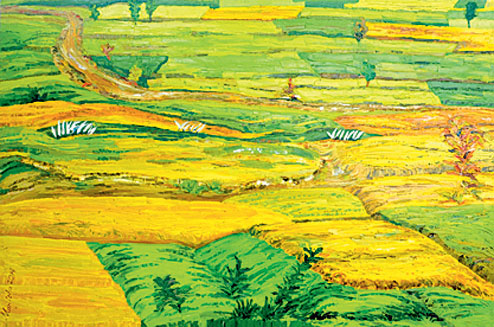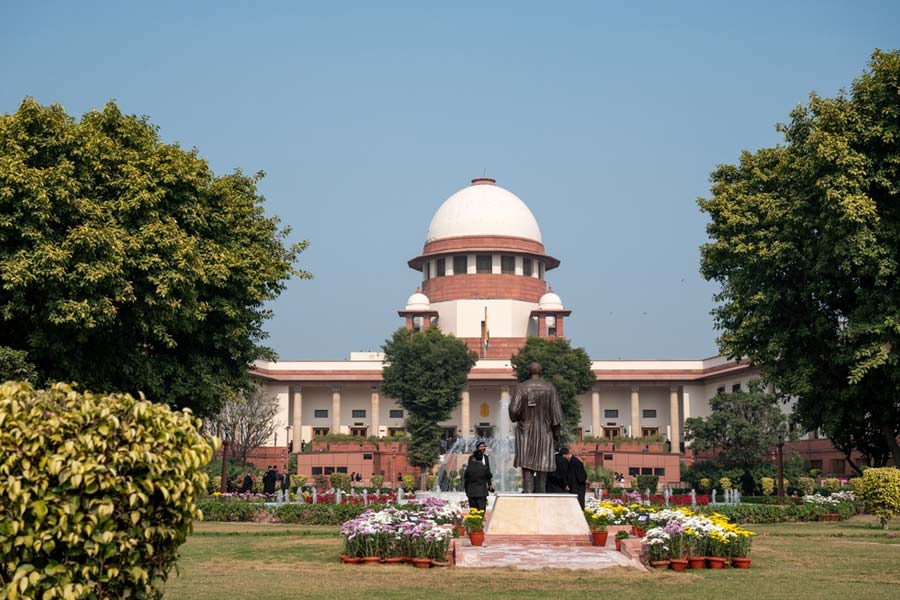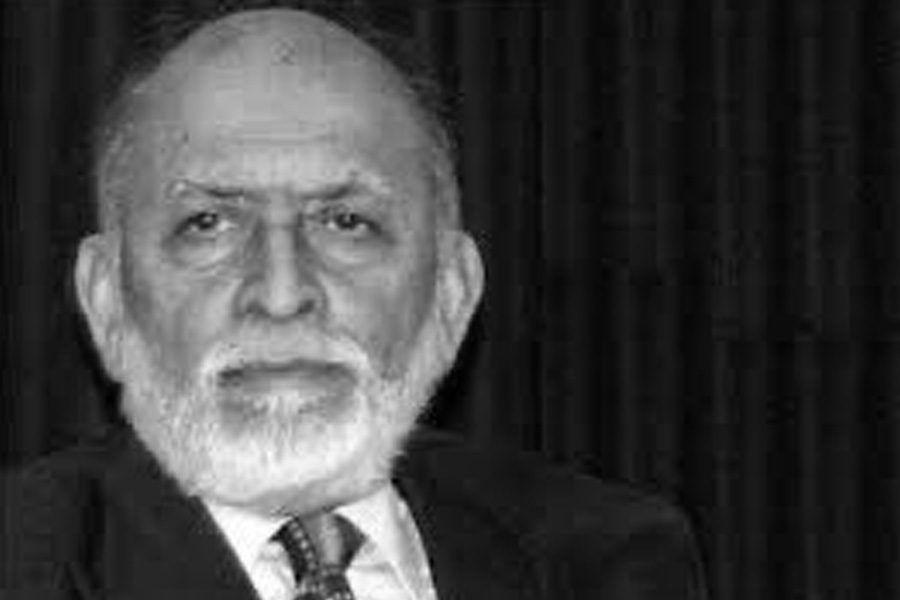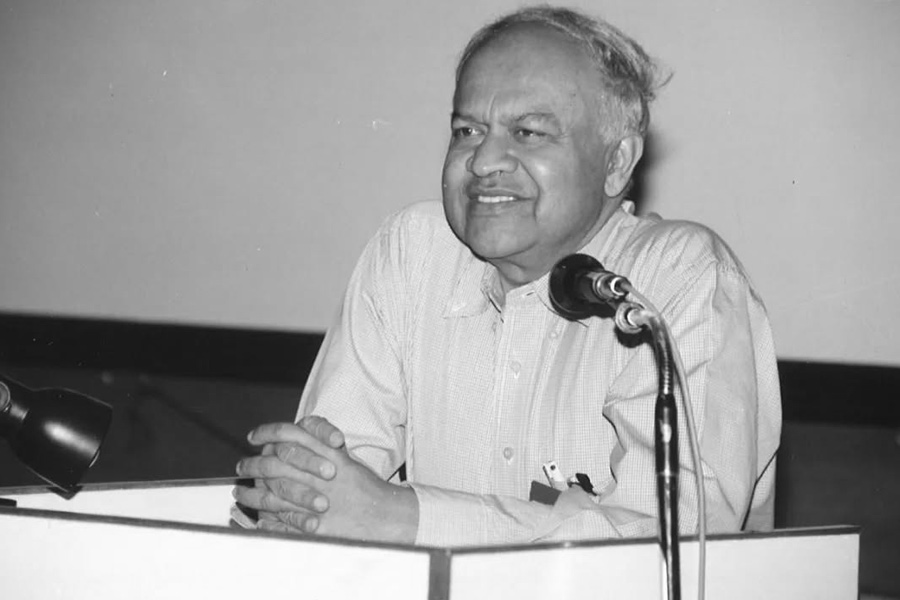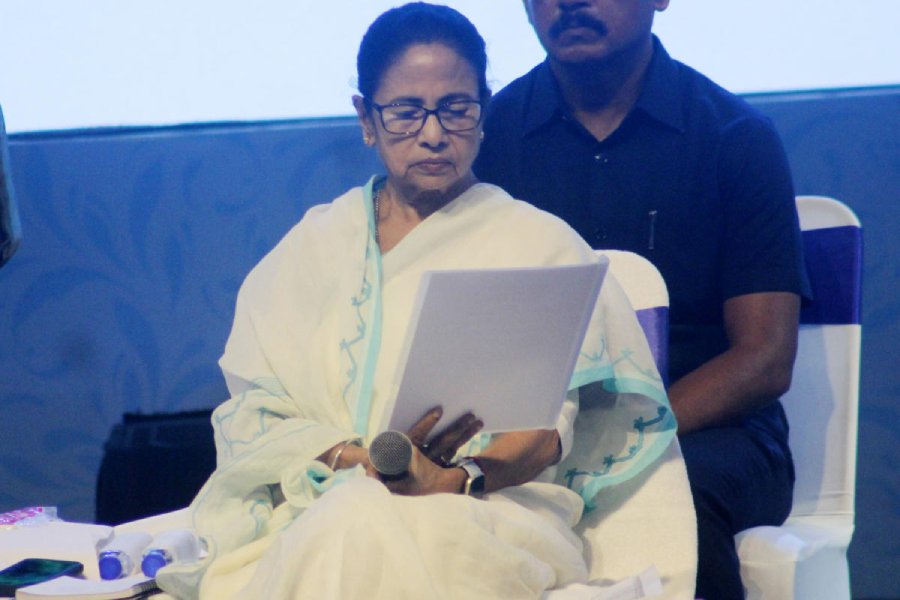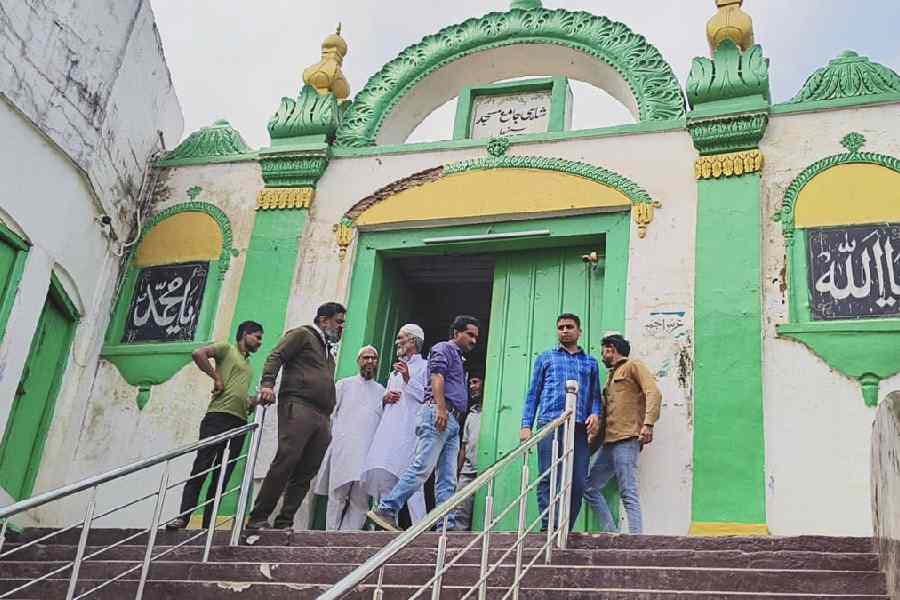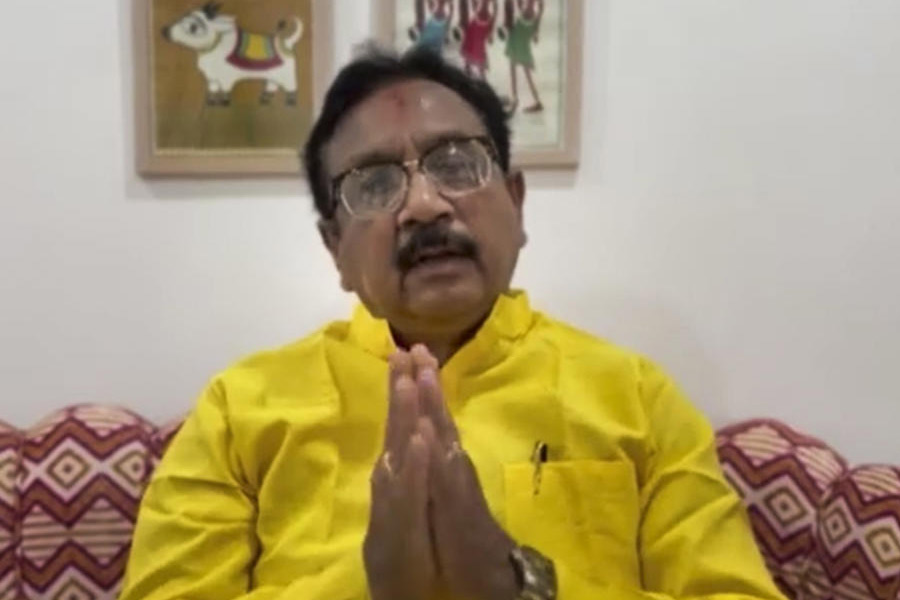 |
Manisha Saha’s landscapes — with their layers of green, ochre and brown recreating the famed golden fields of Bengal (which belong mostly to the realm of nostalgic imagination now) — reminded me of the luscious colours of Jibanananda Das’s poetry, sans their depths of meaning. But depth is not something that Saha is aiming at, because she has professedly tried to capture a “bird’s eye” view of the world — “a beauty seen from distance and from the above” (sic).
This took me to one of the sonnets in Rupasi Bangla (“Tomar buker theke ekdin chole jabe tomar santan”) where Jibanananda describes a field mouse being snatched away by an owl at the very height of the mouse’s gratification on the food of the earth — the desire in its heart still has the smell of broken grains even as its eyes glaze over with blue death. How did the fields of content appear to the dying mouse as it went further and further away from them, gripped in the owl’s talons? Did they look like the voluptuous landscapes of Saha, with death/night closing in over them? However, there is no night in Saha’s smiling lands. Rather, the “bird’s eye view” means that you feel you are looking down from the plane window at the ground beginning to resemble a patched quilt of green and gold as your flight takes off.
Or, maybe, you are in a train and the landscape is whizzing past with such speed that all you see are straight yellow-green lines with daubs of colour standing for the workers on the fields. Then there are the whites clumps of kash in the distance that might appear like the slim egrets tiptoeing among the crops. Saha’s first solo exhibition of paintings at the ICCR, titled Grain Worship (Nov 5-7), refreshed the eye: one felt like a happy child who is presented with a picture book of moving scenes that is the train window.
Saha is in love with the earth and the processes which yield the foodgrain that nourishes earthlings — the swathes of paint laid out in thick layers become swaying stalks of paddy, furrows crisscrossing the tilled earth, hay gathered in fat cones in the middle of the fields or the rugged red ridges one encounters around Santiniketan. Her paintings are like a colourful documentation of all the stages of agricultural activity by one who looks on or passes by, without involving herself with the action. Perhaps as a result, the plots of land don’t run pell-mell towards the horizon, the crops don’t sing in the wind, the grass doesn’t crawl, the sky doesn’t swirl with mad energy — as they do in, say, a Van Gogh or a Pissarro. Neither do the agricultural workers accentuate the immense loneliness of the earth on which they work. In Saha’s landscapes, there is placidity and a sameness: the view from the train window starts getting monotonous after a while.

